Recipe Homemade

Is it safe to use lemon juice as a disinfectant in homemade cleaning recipes ?
Is it safe to use lemon juice as a disinfectant in homemade cleaning recipes? Let's take a closer look at the science behind this question. Lemon juice has a high acidity level, with a pH of around 2, making it effective at breaking down dirt and grime. However, when it comes to killing bacteria and viruses, the acidity alone may not be enough. While lemon juice does have some antimicrobial properties due to its natural compounds like limonene, these are not strong enough to completely disinfect surfaces. In fact, studies have shown that lemon juice is not effective at killing certain types of bacteria like E. coli and Salmonella. Some homemade cleaning recipes call for combining lemon juice with other ingredients like vinegar or hydrogen peroxide. While these combinations may increase the disinfecting power, they still may not be as effective as commercial disinfectants. There are also safety concerns to consider when using lemon juice as a disinfectant. Due to its high acidity, lemon juice can be corrosive to certain surfaces like marble and granite. It can also damage metals over time. Lemon juice can cause skin irritation or burns if it comes into contact with open wounds or sensitive skin. It is important to wear gloves while using it in cleaning solutions. Additionally, some people may be allergic to lemons or their scent, which could trigger an allergic reaction when using lemon juice in cleaning products. If you are looking for natural disinfectants, there are several alternatives to lemon juice such as white vinegar, hydrogen peroxide, tea tree oil, and essential oils like eucalyptus, lavender, and peppermint oils. These alternatives have strong antimicrobial properties and can be added to homemade cleaning solutions for a fresh scent. In conclusion, while lemon juice can be a useful ingredient in homemade cleaning recipes due to its degreasing properties, it should not be relied upon as a sole disinfectant. If you are concerned about germs and bacteria, it is best to use a commercial disinfectant or one of the alternative natural disinfectants mentioned above.

Can I use homemade cleaners on electronic devices, or will they cause damage ?
Homemade cleaners are cost-effective and environmentally friendly, but using them on electronic devices can be risky. Some homemade cleaners, like vinegar and lemon juice, are acidic and can damage sensitive parts of electronic devices. Others, like baking soda, are abrasive and can scratch surfaces or leave a residue behind. Commercial cleaners, on the other hand, are specifically designed for electronic devices and are tested for safety. Therefore, it is recommended to use commercial cleaners on electronic devices to ensure their safety and longevity.

Are there any risks associated with mixing certain natural ingredients in homemade cleaners ?
Using natural ingredients for homemade cleaners is a popular and eco-friendly choice, but it's important to be aware of the potential risks associated with mixing certain substances. These risks include bacterial growth, chemical reactions, skin irritation, and corrosion. To safely use natural ingredients for cleaning purposes, research their properties and potential interactions, label your cleaners clearly, store them properly, test a small amount before extensive use, and wear appropriate protective gear. By following these tips, you can ensure that your homemade cleaners are effective and safe for both you and the environment.
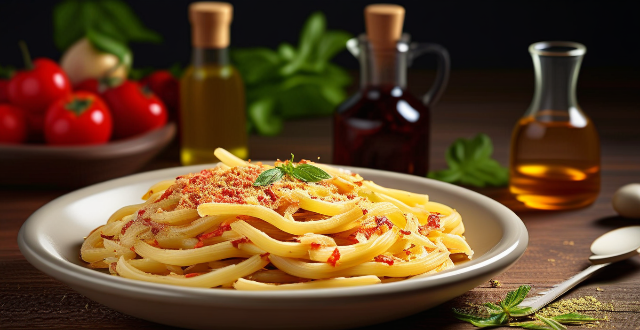
Can you suggest a quick and easy pasta recipe for busy weeknights ?
This quick and easy pasta recipe is perfect for busy weeknights. It requires minimal ingredients like spaghetti pasta, tomato sauce, onion, garlic, olive oil, salt, pepper, and optional grated Parmesan cheese. The steps involve cooking the pasta, sautéing onions and garlic, adding tomato sauce, mixing the pasta with the sauce, and serving with optional Parmesan cheese. This recipe can be customized with add-ins like vegetables, meatballs, or chicken.
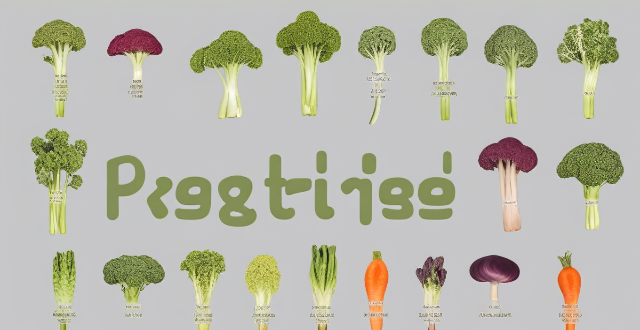
What are some vegetarian recipes that are also gluten-free ?
This text provides three vegetarian and gluten-free recipes that are both nutritious and delicious. The first recipe is for lentil soup, which is a hearty and filling meal. The second recipe is for quinoa salad, which is a great source of protein and makes an excellent base for a salad. The third recipe is for zucchini noodles with pesto sauce, which is a fantastic gluten-free alternative to traditional pasta. These recipes showcase the diversity of flavors and textures that can be achieved on a vegetarian and gluten-free diet.
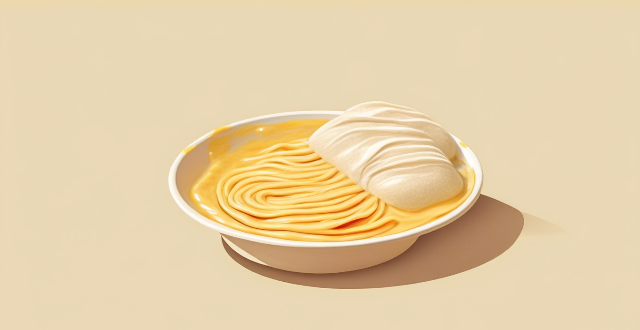
How can I improve my pie crust recipe ?
To improve your pie crust recipe, focus on using high-quality ingredients like all-purpose flour and unsalted butter. When mixing the dough, combine dry ingredients first, then cut in cold butter until it resembles coarse crumbs. Gradually add ice-cold water and gently knead the dough until it forms a cohesive ball. Avoid overworking the dough to prevent toughness. For rolling out the dough, chill it first to firm up the butter and prevent shrinkage. Roll out the dough on a lightly floured surface to an even thickness of about 1/8 inch. Carefully transfer the rolled-out dough to your pie plate, trim excess, and crimp the edges as desired. Blind bake single crust pies by pre-baking with pie weights or dried beans for 15-20 minutes at 375°F before adding the filling. For double crust pies, brush the top crust with an egg wash for shine and seal cracks or gaps. Cut small slits in the top crust to vent steam during baking. Bake at the specified temperature (usually between 350°F and 375°F) and check for doneness by inserting a knife into the center of the filling; if it comes out clean, the pie is ready. Allow it to cool completely before slicing to avoid a runny filling.

What are some tips for beginners in baking ?
Baking is a rewarding hobby that can bring joy and delicious treats to your life. Here are some tips to help beginners get started: 1. Read the recipe thoroughly before starting. 2. Use the right ingredients, fresh and as specified in the recipe. 3. Prep your ingredients beforehand. 4. Follow the recipe steps carefully. 5. Practice patience during the baking process. 6. Learn from your mistakes and keep practicing.
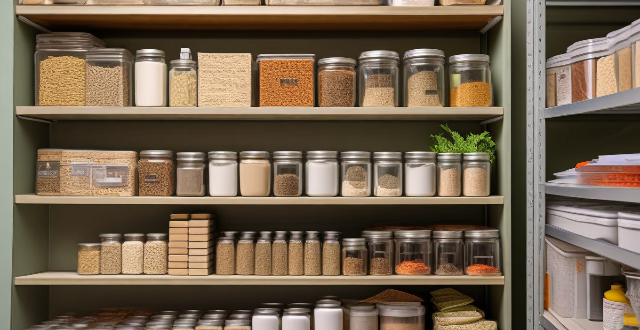
How long do homemade natural cleaners typically last before they lose their potency ?
Homemade natural cleaners' shelf life depends on factors like ingredients, storage, and concentration. To extend their lifespan, use high-quality ingredients, store properly, label with dates, avoid cross-contamination, and consider adding natural preservatives.
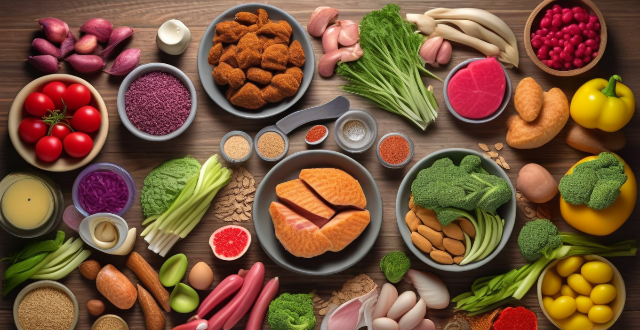
Are there any natural alternatives to sports nutrition supplements that can provide similar benefits ?
The article discusses natural alternatives to sports nutrition supplements that can provide similar benefits without the need for synthetic supplements. Whole foods, herbal supplements, spices and condiments, and proper hydration are all excellent sources of nutrients that support athletic performance. Examples include fruits and vegetables rich in vitamins, minerals, and antioxidants, nuts and seeds high in healthy fats, protein, and fiber, lean protein sources such as chicken, fish, and beans, Tribulus Terrestris, Maca Root, Ashwagandha, Turmeric, Ginger, Cinnamon, and a homemade electrolyte drink recipe. By incorporating these natural alternatives into your diet, you can support your athletic performance and overall health naturally.
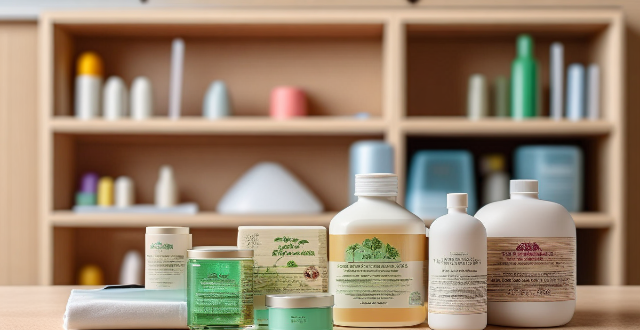
What is the best way to store homemade natural cleaning products to maintain their effectiveness ?
Storing homemade natural cleaning products is crucial to maintain their effectiveness. Tips include using glass containers, labeling bottles, storing in a cool, dark place, keeping out of reach of children and pets, using within a reasonable time frame, and shaking well before use. Following these tips ensures the products remain effective and safe to use.

What are some tips for labeling and keeping track of different homemade cleaning solutions ?
Label and keep track of homemade cleaning solutions with clear labels, appropriate containers, color coding, and a list. Store them out of reach of children and pets, and date the solutions for replacement tracking.

How can I prepare a quick and tasty soup ?
In this text, the author provides a simple and quick recipe for preparing a tasty soup at home. They detail the ingredients needed, including olive oil, onion, garlic, carrots, celery, zucchini, vegetable broth, white beans, spinach, salt, pepper, and fresh herbs for garnish. The instructions are broken down into six steps: sautéing the vegetables, adding broth and beans, simmering, adding spinach, seasoning, and garnishing before serving. The author also offers tips for variations, adding protein, and spicing up the soup. Overall, the text emphasizes the versatility and nutritional value of soups while providing a straightforward recipe for a delicious homemade option.

What are the best natural ingredients for making homemade cleaning products ?
Cleaning your home doesn't have to involve harsh chemicals or expensive store-bought products. With a few natural ingredients, you can create effective and eco-friendly cleaning solutions that are safe for your family and the environment. Here are some of the best natural ingredients for making homemade cleaning products: 1. White Vinegar: A versatile and inexpensive cleaning agent that cuts through grease, disinfects surfaces, removes stains and odors, and deodorizes the air. Use it as an all-purpose cleaner, glass cleaner, or oven cleaner. 2. Baking Soda: A gentle yet powerful abrasive that tackles tough cleaning jobs without scratching surfaces. It neutralizes acidic odors, leaves no residue behind, and can be used as a sink and tub scrub, carpet deodorizer, or laundry booster. 3. Lemon Juice: A natural disinfectant and deodorizer that leaves surfaces smelling fresh and clean. It cuts through grease, leaves a pleasant citrus scent, and can be used as an all-purpose cleaner, chrome polish, or hardwater stain remover. 4. Castile Soap: A vegetable-based soap that is gentle on skin and surfaces while still being effective at cutting through dirt and grime. It is biodegradable, eco-friendly, and can be used in various dilutions for different purposes such as an all-purpose cleaner, floor cleaner, or handwash. 5. Essential Oils (Optional): While not strictly cleaning agents, essential oils can enhance the effectiveness of your homemade cleaning products by adding antibacterial properties and a pleasant scent. Popular choices include tea tree oil, lavender oil, and lemon oil.
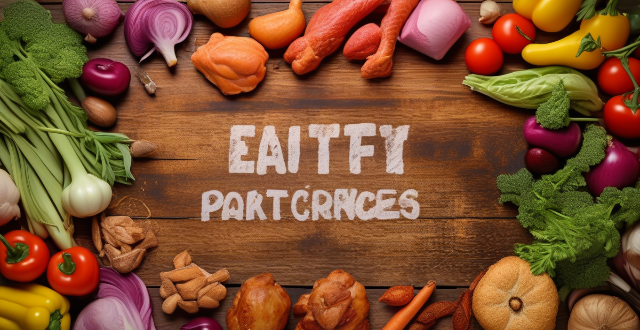
Can you suggest any easy-to-make lunch box recipes ?
The text provides a list of easy-to-make lunch box recipes. The first recipe is for grilled chicken and vegetable skewers, which involves marinating chicken breasts in a favorite sauce, cutting vegetables into large chunks, threading them onto skewers, and grilling until cooked through. The second recipe is for hummus and veggie wrap, which involves spreading hummus on a whole wheat tortilla, adding sliced cucumbers, carrots, and bell peppers, rolling up tightly, and slicing in half. The third recipe is for tuna salad lettuce wraps, which involves mixing canned tuna with mayo, lemon juice, and chopped celery, spooning the mixture onto lettuce leaves, and rolling up. The fourth recipe is for quinoa salad, which involves cooking quinoa according to package instructions, tossing with chopped tomatoes, cucumbers, feta cheese, and a simple vinaigrette, and packing in a container with pita chips or crackers. The fifth recipe is for egg salad sandwich, which involves hard boiling eggs, chopping them up, mixing with mayo, mustard, salt, and pepper, and serving on whole grain bread with lettuce and tomato. The sixth recipe is for Caprese salad, which involves slicing fresh mozzarella and tomatoes, drizzling with olive oil and balsamic vinegar, adding fresh basil leaves, and seasoning with salt and pepper. The seventh recipe is for turkey and cheese roll-ups, which involves laying out slices of turkey and cheese on a slice of bread, rolling up tightly, and slicing into bite-sized pieces. The eighth recipe is for Greek yogurt parfait, which involves layering Greek yogurt, granola, and fresh fruit in a jar or container, and topping with honey or maple syrup if desired. The ninth recipe is for black bean and corn salad, which involves rinsing and draining a can of black beans, mixing with canned corn, diced red onion, cherry tomatoes, and a lime vinaigrette, and serving chilled with tortilla chips or crackers. The tenth recipe is for avocado toast, which involves mashing an avocado with lime juice and salt, spreading on toasted whole grain bread, and topping with everything bagel seasoning or red pepper flakes for extra flavor.

How do professional bartenders measure ingredients for consistency ?
Professional bartenders use a variety of tools and techniques to measure ingredients consistently. Accuracy is crucial for maintaining the same flavor profile and balancing different tastes in cocktails. Efficiency is also important, as it speeds up drink-making and allows bartenders to focus on customer interaction. Jiggers are commonly used tools for measuring both large and small quantities of liquids. Measuring spoons are used for smaller amounts like bitters or syrup. Digital scales are used for precise measurements by weight, especially for ingredients like fruit juices or syrups. Pour spouts and containers help control the flow of liquids to reduce spillage and waste. Standardization processes such as recipe cards, batching, and taste testing are also essential. Recipe cards include detailed measurements for each ingredient, helping new bartenders learn quickly and maintain consistency. Batching involves pre-mixing a large volume of a single cocktail ingredient or an entire recipe, saving time during busy shifts and ensuring uniformity. Taste tests are crucial even with precise measurements, as bartenders adjust recipes based on customer feedback and ingredient freshness. In conclusion, professional bartenders rely on a combination of tools, techniques, and standardized processes to measure ingredients consistently. This ensures that they can replicate the perfect cocktail every time, providing a high-quality experience for their customers.

Can essential oils be used in homemade cleaning solutions, and if so, which ones work best ?
Essential oils can be added to homemade cleaning solutions for natural, eco-friendly alternatives to commercial cleaners. Some of the best oils for cleaning include lemon, tea tree, lavender, peppermint, eucalyptus, and clove, each with its own unique benefits and uses. To use essential oils in cleaning solutions, choose a base like distilled water, white vinegar, baking soda, or castile soap, add the oils, mix well, test on a small area, and then clean as usual. However, it's important to always dilute essential oils before use and avoid using them around pets and children unless specified safe.

What are the pros and cons of using vinegar as a cleaning agent in homemade solutions ?
Using vinegar as a cleaning agent in homemade solutions has both advantages and disadvantages. It is a natural disinfectant, deodorizer, environmentally friendly, cost-effective, and versatile. However, its acidic nature can damage certain surfaces and materials, and its strong smell may not be desirable in some environments. It is essential to understand the properties of vinegar and use it appropriately to avoid damaging surfaces or leaving behind unwanted odors.
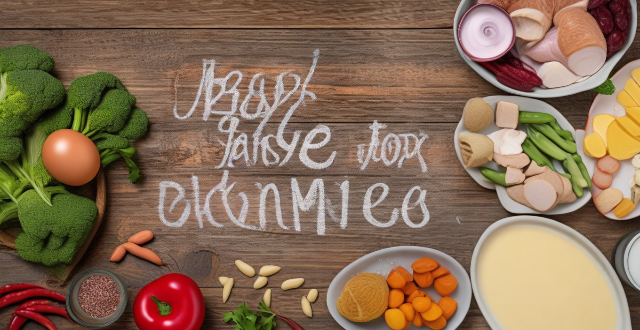
What are some easy and delicious recipes for a family dinner ?
The text provides three easy and delicious recipes for a family dinner: Spaghetti Carbonara, Chicken Stir Fry, and Baked Salmon with Lemon and Herbs. Each recipe includes a list of ingredients and step-by-step instructions for preparation and cooking. The Spaghetti Carbonara recipe involves cooking spaghetti and bacon, making a sauce with heavy cream and Parmesan cheese, and serving it hot with crumbled bacon on top. The Chicken Stir Fry recipe requires stir frying chicken strips, vegetables, and seasonings in a wok or skillet and serving it hot with rice or noodles. The Baked Salmon with Lemon and Herbs recipe involves baking salmon fillets with lemon slices and herbs until cooked through and flaky.

How do I get that restaurant-quality flavor in my homemade crab cakes ?
How to Achieve Restaurant-Quality Flavor in Homemade Crab Cakes: - Freshness and quality of ingredients are crucial. - Lump crabmeat is preferred for its sweet flavor and good texture. - Use a combination of seasonings like Old Bay, mustard, Worcestershire sauce, and hot sauce. - Bind the mixture with mayonnaise or mustard lightly. - Pan-fry or oven-bake the crab cakes for different textures. - Serve with remoulade sauce and sides like green salad or roasted vegetables. - Allow the crab cakes to rest before cooking and avoid overcrowding the pan.

What are some healthy and low-calorie recipes for weight loss ?
Weight loss is a common goal for many people, but it can be difficult to find healthy and low-calorie recipes that taste good. Here are some healthy and low-calorie recipes that you can try: 1. Roasted Brussels Sprouts with Garlic and Parmesan Cheese: This recipe involves trimming and halving 2 cups of Brussels sprouts, mincing 3 cloves of garlic, and combining them with olive oil, salt, pepper, and grated Parmesan cheese before roasting in the oven. 2. Baked Salmon with Lemon and Dill Sauce: This recipe involves placing skinless salmon fillets on a baking sheet and whisking together lemon juice, dill weed, salt, pepper, olive oil, white wine vinegar, honey, and water before pouring over the fish and baking in the oven. 3. Zucchini Noodles with Pesto Sauce: This recipe involves spiralizing or cutting zucchini into noodles using a spiralizer, cooking them in olive oil until softened, adding pesto sauce, salt, pepper, chopped parsley leaves, and freshly grated Parmesan cheese if desired before serving warm.

Can you recommend any tasty and healthy low-calorie soup recipes for lunch ?
Here is a topic summary for the text: The text recommends three tasty and healthy low-calorie soup recipes for lunch. The first recipe is Tomato Basil Soup, which is low in calories and packed with vitamins and antioxidants. The second recipe is Carrot Ginger Soup, which is healthy and comforting with a sweet and spicy flavor. The third recipe is Broccoli Cheddar Soup, which is a bit higher in calories but still a healthy and delicious option with a rich and flavorful taste. All three recipes are easy to make and can be enjoyed as a satisfying and nutritious lunch option.
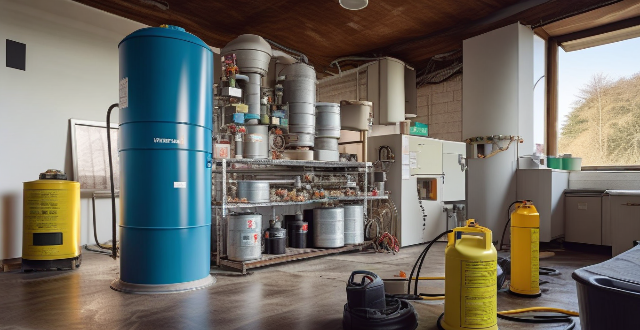
Can I substitute coconut oil for other oils when making my own cleaning solutions ?
Coconut oil can be substituted for other oils in homemade cleaning solutions due to its antibacterial properties, natural scent, and safety. It can be used in all-purpose cleaners, furniture polish, and glass cleaners. However, it is solid at room temperature and may make the solution thicker. Additionally, it has a long shelf life but can go rancid if exposed to heat or light for extended periods.

How can I recreate my favorite restaurant's pasta dish at home ?
Recreating your favorite restaurant's pasta dish at home can be a fun and rewarding experience. Here are some steps to help you achieve that delicious taste in your own kitchen: 1. Gather all the necessary ingredients, including pasta, sauce, proteins, vegetables, cheese, herbs, and spices. 2. Make sure you have all the necessary tools for cooking and serving the dish, such as a large pot, colander, frying pan or skillet, wooden spoon or spatula, grater, and pasta server. 3. Follow these steps to recreate your favorite restaurant's pasta dish: boil the pasta, cook the protein, sauté the vegetables, make the sauce, combine everything, add cheese and herbs, serve hot with additional toppings or side dishes if desired. 4. Enjoy your homemade pasta dish with your family or friends!
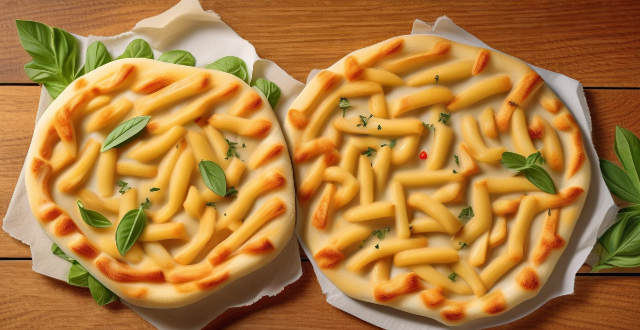
What are the best Italian pasta recipes for beginners ?
The provided text offers two Italian pasta recipes suitable for beginners: Spaghetti Carbonara and Penne all'Arrabbiata. The first recipe includes ingredients like spaghetti, bacon, garlic, Parmesan cheese, and egg yolks, and involves cooking the spaghetti, making a bacon-garlic mixture, and combining everything with a cheese-egg yolk mixture. The second recipe calls for penne pasta, olive oil, garlic, red pepper flakes, crushed tomatoes, salt, pepper, and basil leaves, and consists of cooking the penne, preparing a spicy tomato sauce, and combining them. Both dishes are described as easy to prepare and full of flavor.

Can you suggest some festive recipes for Christmas dinner ?
The text provides various festive recipes for Christmas dinner, including main courses such as roasted turkey and honey-glazed ham, side dishes like garlic mashed potatoes and green bean casserole, and desserts including pumpkin pie and gingerbread cake. Each recipe is accompanied by a list of ingredients and step-by-step instructions for preparation.
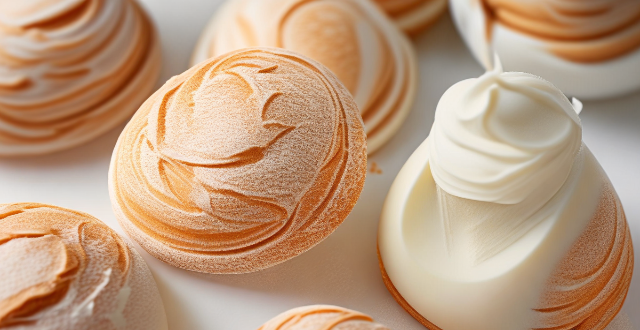
Can you explain the process of making a perfect mille-feuille ?
To make a perfect mille-feuille, prepare puff pastry by rolling it out and baking until golden brown. Make the vanilla pastry cream by simmering milk and heavy cream with vanilla bean seeds, then whisking in a mixture of sugar, flour, cornstarch, and egg yolks. Assemble the mille-feuille by layering the chilled puff pastry and pastry cream, then chilling before slicing and serving. Precision and patience are key to mastering this delightful dessert.
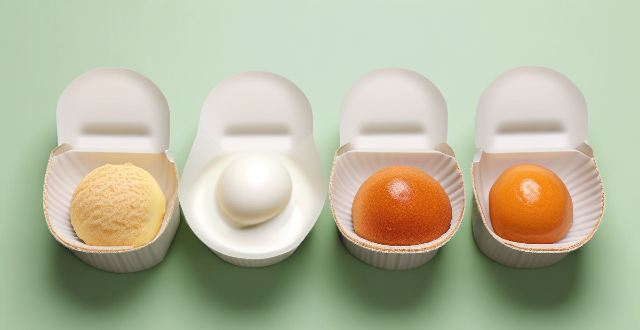
What are some healthy and quick breakfast options that can be prepared ahead of time ?
Overnight oats, smoothie bags, muffin tin egg cups, granola bars, yogurt parfaits, and baked sweet potatoes are healthy breakfast options that can be prepared ahead of time. These meal-prepped breakfasts offer benefits such as convenience, versatility, nutrient density, and customizability based on personal preferences. Tips for successful meal prep include planning ahead, batch cooking, proper storage, and staying organized. Incorporating these options into your routine ensures a healthy and satisfying start to the day while saving time in the mornings.

What is the importance of dental hygiene in pets and how can it be maintained ?
The Importance of Dental Hygiene in Pets Dental hygiene is a crucial aspect of your pet's overall health and well-being. Poor dental hygiene can lead to various health issues, including bad breath, gum disease, tooth loss, and even more severe problems like heart, liver, or kidney disease. Therefore, maintaining good dental hygiene for your pets is essential. Maintaining dental hygiene in pets involves several steps that should be incorporated into their daily routine. These steps include regular brushing, dental chews and toys, regular checkups with a veterinarian, specialized dental foods, and homemade remedies. Incorporating these steps into your pet's daily routine can help keep their teeth healthy and prevent potential health issues down the line.
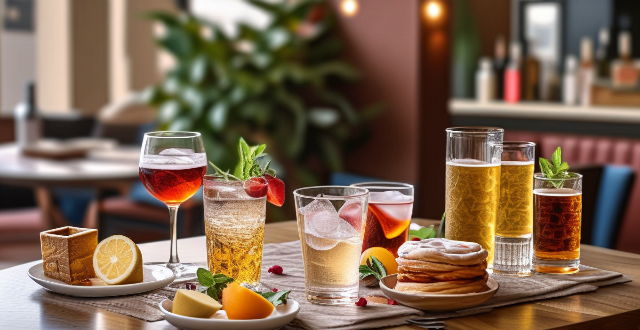
How do I create a signature cocktail for my bar or restaurant ?
How to create a signature cocktail for your bar or restaurant, including determining target audience, analyzing competition, choosing a theme, selecting quality ingredients, experimenting with flavors, perfecting the recipe, naming the cocktail, training staff, marketing the cocktail, and evaluating and adjusting based on sales data and customer feedback.
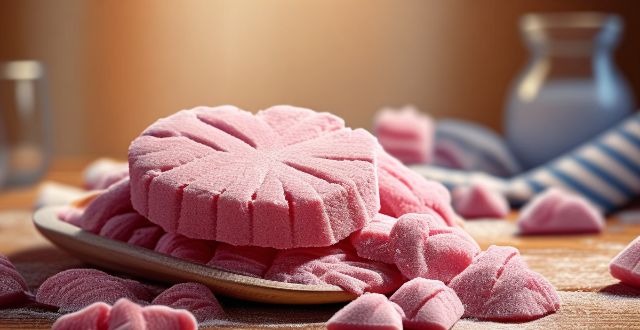
What makes macarons a quintessential French sweet treat ?
Macarons are a quintessential French sweet treat due to their origins, precise recipe requirements, variety, elegance, and cultural significance. They were perfected by the French in the mid-19th century and have become a staple in French patisseries. Despite the simplicity of the ingredients, making macarons requires precision and skill, which is emblematic of French culinary traditions. Macarons come in a wide range of colors and flavors, allowing for creativity and customization. Their small size and elegant appearance make them perfect for an afternoon tea or a light dessert. In France, baking is considered an art form, and the craft of making macarons is no exception. They are often given as gifts during special occasions, reflecting the French tradition of giving thoughtful, beautiful presents. Overall, macarons are not just a sweet treat but a representation of the beauty and refinement associated with French cuisine.